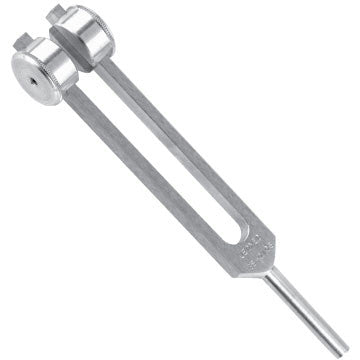
Tuning forks are one of the best methods of screening for hearing loss. They are used for conducting Rinne Test and the Weber test for screening for hearing loss. The test is known as Rinne Test, in which the doctor sets a timer to measure the time duration of hearing when a humming tuning fork is held to the skull. The test compares perception of sounds transmitted by air conduction to those transmitted by bone conduction.ĭuring Weber test, doctor holds a vibrating tuning fork in the middle of a patient's forehead. The damaged ear is identified by figuring out which ear hears the tuning fork the loudest. Purpose, the tuning forks are labelled with the calibration speed and radarīand (such as X-band or K-band) instead of frequency. Radar guns which are used to measure the speed ofĬars or a ball in case sports are calibrated with a tuning fork. They can be driven electrically by placing electronic oscillator driven electromagnets close to the tines. Tuning forks have been used to tune musical instruments before they were replaced with electronic tuners. Tuning forks can vibrate in a multiple mode namely Fundamental Mode (426 Hz), Clang Mode (2585 Hz), Asymmetric Modes (in-plane bending), Out-of-Plane Bending, Asymmetric Out-of-Plane Bending Modes. Due to this, it produces a low-pressure region next to the tine.Ī tuning fork's pitch depends on the mass and length of the two tines. Tuning forks are essential tools for teaching physics. The particles present in the medium do not move but vibrate the particles from their equilibrium position which exerts pressure on its adjacent particle. As a tine moves from its equilibrium position, the air molecules present in surrounding compresses into a small region of space, thereby, creating a high-pressure region next to the tine. Conversely, the air surrounding the tine expands when the tine moves inward from its usual position. When the tines of the fork vibrate, they push the air particles present in the medium. A vibrating tuning fork creates a longitudinal wave. There are two methods for “playing” this tuning fork: tapping one tine (one of the prongs) on the hand’s carpus or with a metal and rubber stick (optional).The fork consists of a handle and two prongs extending from it. In this case an optional pointed accessory is used instead. The wide tip is not used in auricolotherapy as stimulation areas are very small and close together. If the exact position of these points is not known, an optional wide-tip accessory can be used to increase the contact area. This tuning fork is used on acupuncture, shiatsu, reflexology, acupressure and auricolotherapy points. The 136,1 Hz tuning fork is used to rebalance internal organs by stimulating the well-known reflex points and their corresponding meridian points mapped by Chinese traditional medicine.

There are two methods for “playing” this tuning fork: tapping one tine (one of the two prongs) on the hand’s carpus or with a special metal and rubber stick (optional). The 128 Hz healing tuning fork is, therefore, used on contractures or aching areas.Īn optional, wide-tip accessory (optional) is used to increase the size of the treatment area, so as to increase the vibration contact area,

This frequency is especially helpful in alleviating localised pain. The 128 Hz healing tuning fork can effectively fight contractures as well as muscle and bone pain. These different frequencies have been studied at the Centro de Terapia de Sonido y Estudios Armónicos in Buenos Aires, in collaboration with Argentine and foreign hospitals. Healing tuning forks are instead tuned to specific frequencies that have different beneficial effects on our body, depending on their tuning frequency. We know of tuning forks because they are used to tune musical instruments.įor example, the musical note A has a frequency of 440 Hz and middle C has a frequency of 261,625 Hz.


 0 kommentar(er)
0 kommentar(er)
